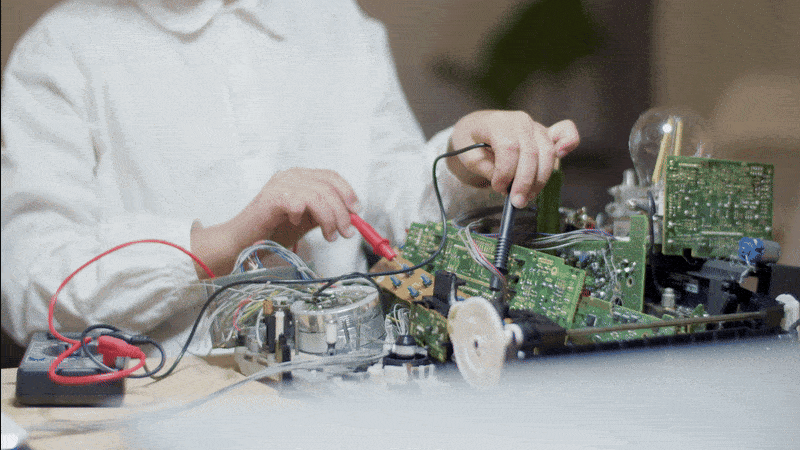In the competitive field of physical design engineering, your resume needs to stand out to catch the attention of hiring managers. Crafting a resume that highlights your technical expertise is essential, but how you present that expertise can make all the difference. Using powerful action words can elevate your resume from ordinary to exceptional.
In this blog, we’ll share actionable resume tips for physical design engineers to help you showcase your achievements effectively. By leveraging action words for Physical design resume, you can demonstrate your impact and expertise in a compelling way.
Why Action Words Matter for Physical Design Resumes
Action words, or action verbs, are powerful tools that highlight your contributions and skills in a way that captures attention. Physical design resume tips to stand out include using these words to show not just what you did, but how you made an impact. Instead of merely listing your job responsibilities, action words help you convey the impact of your work. For instance, instead of saying "Worked on floorplanning," you could say "Optimized floorplanning to enhance chip performance.”
This subtle change demonstrates that you didn’t just perform a task but made a measurable difference. Using "action verbs to highlight your physical design experience" ensures your resume is results-oriented, making it more appealing to recruiters.
Tailoring Your Resume with Action Words
When applying for a physical design role, tailoring your resume to the job description is crucial. Start by analyzing the job posting to identify key skills and qualifications. Incorporate these elements into your resume using relevant action words. For example, if the job
emphasizes timing analysis and physical verification, make sure these skills are prominently displayed with strong verbs that highlight your contributions.
For instance, instead of writing, Performed timing analysis, you could say, Executed timing analysis to identify and resolve critical path delays, ensuring adherence to design requirements. This not only shows your technical ability but also demonstrates the impact of your work.
Using Industry-Specific Action Words
Physical design engineering involves specialized tasks like floorplanning, power optimization, and clock tree synthesis. Using specific and impactful action words can effectively convey your expertise in these areas. This is one of the best physical design resume tips to stand out and demonstrate your unique skills. Consider action verbs like "optimized," "streamlined," "analyzed," "designed," and "implemented" to add weight to your achievements.
For example:
Streamlined physical verification processes, reducing design cycle time by 15%.
Optimized power distribution networks, improving chip efficiency by 20%.
These verbs convey a sense of action and accomplishment, making your resume more dynamic and engaging.
Highlighting Achievements with Measurable Results
Recruiters value resumes that emphasize results over responsibilities. Whenever possible, quantify your achievements to showcase the impact of your work. Numbers provide tangible evidence of your contributions and make your resume more compelling.
For example:
Optimized floorplanning strategies, leading to a 20% reduction in chip area and a 10% increase in performance.
Automated design validation processes, improving accuracy and reducing manual effort by 30%.By pairing action verbs with measurable outcomes, you create a resume that demonstrates not only what you did but how it benefited your team or organization.
Showcasing Collaboration and Leadership
Physical design projects often involve teamwork and collaboration across multiple departments. Highlight your ability to work effectively with others by using action words that emphasize collaboration, leadership, and communication skills. Verbs like collaborated, coordinated, led, and mentored can showcase your interpersonal strengths.
For example:
Collaborated with cross-functional teams to resolve power and timing closure challenges.
Mentored junior engineers, enhancing team productivity and knowledge sharing.
These phrases show that you’re not only technically proficient but also a team player who contributes to a positive work environment.
Demonstrating Innovation and Continuous Improvement
Employers appreciate candidates who show initiative and a commitment to continuous improvement. Highlight your innovative contributions by using action verbs that reflect your ability to improve processes and adopt new methodologies.
For example:
Implemented new methodologies for clock tree synthesis, reducing skew and jitter by 12%.
Enhanced design workflows by integrating advanced EDA tools, improving efficiency by 25%.
These statements position you as a forward-thinking professional who adds value to the organization.
Structuring Your Resume Effectively
Using action words is just one part of creating an effective resume. The overall structure and presentation also play a significant role in making a strong impression. Keep the following formatting tips in mind:
Professional Layout
Use a clear, professional layout with consistent formatting. Stick to a clean font like Calibri or Arial, and ensure your resume is easy to read. Organize your information using clear headings and bullet points.
Technical Skills Section
Create a dedicated section to showcase your technical expertise. Include skills like:
- EDA Tools: Cadence, Synopsys, Mentor Graphics
- Design Techniques: Floorplanning, CTS, P&R
- Programming: TCL, Python, Perl
- Verification: DRC, LVS, Static Timing Analysis
Education and Certifications
List your educational background and any relevant certifications. If you’ve completed specialized courses or training, such as advanced VLSI design or physical verification workshops, be sure to include them.
Avoiding Common Mistakes
Even the most well-crafted resumes can fall short due to common pitfalls. Here are some mistakes to avoid:
Generic Descriptions
Avoid vague phrases like responsible for or involved in. Use specific action verbs to describe your contributions and achievements.
Overuse of Technical Jargon
While technical expertise is important, ensure your resume is accessible to non-technical reviewers. Strike a balance between technical details and clear explanations.
Lack of Results
Always include measurable outcomes to demonstrate the impact of your work. Recruiters want to see how your contributions have benefited previous employers.
Final Thoughts
Using action words effectively can transform your physical design resume into a compelling document that showcases your skills and achievements. By tailoring your resume to the job description, highlighting your results, and emphasizing collaboration and innovation, you can make a strong impression on hiring managers.
Remember, your resume is your first opportunity to tell your professional story. Apply these tips, incorporate action verbs to highlight your physical design experience, and ensure your resume stands out in the competitive field of physical design engineering. With the right approach, you can position yourself as a top candidate for your desired role.

Why VLSIFIRST Is the Best Career Launchpad for ECE, EEE & CSE Graduates
Discover why ECE, EEE, and CSE graduates choose VLSIFIRST for high-paying VLSI careers. Learn how industry-ready training, projects, and placements accelerate your journey.

Engineering Completed? How VLSIFIRST Helps You Enter VLSI Faster
Discover how VLSIFIRST helps engineering graduates fast-track their VLSI careers with industry-ready training, projects, mentorship, and job-oriented skill development.

Clock Gating vs Power Gating: Implementation, RTL Flow & Verification Guide
Learn how to implement clock gating and power gating with RTL design steps, backend changes, UPF flow, and a full verification checklist for efficient low-power VLSI design.
_11zon.jpg)
What to Do After Engineering? Why VLSIFIRST Leads Chip Design Careers
Discover why VLSIFIRST is becoming the top choice for engineering graduates pursuing VLSI and semiconductor careers. Explore job roles, growth, and industry-ready training benefits.

VLSI Career Roadmap for Engineering Graduates: Step-by-Step Guide
A complete VLSI career roadmap for engineering graduates. Learn skills, domains, tools, and steps to become a successful semiconductor engineer in the chip design industry.
VLSI Job Opportunities EEE Graduates, Top VLSI Companies EEE Graduates Should Consider, Best Tools To Check Your Resume Score, VLSI Training in Ahmedabad, Chip Level Test Techniques In VLSI, VLSI RTL Design and Verification Training in Noida, PCIe Interview Questions, Earnings And Benefits In VLSI For EEE Graduates, VLSI RTL Design and Verification Training Institute, Career Gap Explanation For Engineers, How To Land A Job In The Semiconductor Sector, Key Factors In Selecting The Right Design Engineering Role, Soft Skills For VLSI Jobseekers To Stand Out
Hours
Copyright 2025 © VLSI Technologies Private Limited
Designed and developed by KandraDigitalCopyright 2025 © VLSI Technologies Private Limited
Designed, Developed & Marketing by KandraDigital
